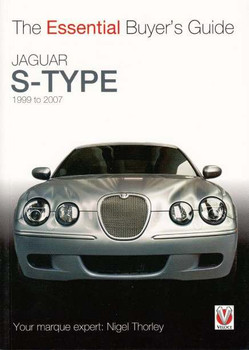Description
Marque Expert: Nigel Thorley, Softbound, 64 Pages, ISBN: 9781845848064 - 1st Edition, July 2015
-
Introduction
- the purpose of this book
The cars covered in this publication were coded by the company X-150. Here, we will continue to use this designation, or 'New XK,' where necessary, to avoid confusion with previous XK models.
The XK 'line' began in 1948 with the introduction of the XK120, which became a benchmark for all two-seater sports cars. That first generation of XK sports
cars continued, through the XK140 and XK150, until 1961, when the model was replaced by the iconic E-type. The XK insignia then lay dormant until 1996, when Jaguar announced its new XK8 model, at the time the replacement for the XJS (produced from 1975 to 1996). The XK8 was a fusion of new and old technology, retaining the existing XJS floorpan, but with a new stylish body and refined 4.0-litre V8 engine. That model, in various forms, stayed in production until 2005, when it was finally replaced by the New XK featured in this publication.
The launch of the X-150 in 2005 confirmed Jaguar's policy, introduced with the new XJ (X-350) saloon in 2003, to continue producing new models with aluminium bodywork.
The key element of Jaguar's X-150 model was the light aluminium construction, and the method of bonding and riveting of the panels. This led to an improvement in build quality and kept the overall weight of the vehicle down, resulting in good fuel economy, meeting the demands of modern day motorists and higher fuel costs.
Initially, the car was only available with the 'existing' 4.2-litre AJ-V8 engine, derived from the previous model. In 2009, this was replaced by an entirely new high tech 5.0-litre V8 Gen III engine, enhancing performance and refinement.
Stylistically, the X-150 retained key features of previous XK8 models, including an enlarged nose air intake, and the rear wing 'haunch' - though this was more pronounced. In overall terms, it looked and felt a much larger car than the previous model.
The essence, therefore, of the X-150 was to satisfy the needs of existing XK customers, and, at the same time, entice discerning drivers away from other prestige brands.
The X-150 had a relatively short production run - just eight years - stopping in 2014. When new, it was very well received, and as the years have gone by
it has already found a very strong following in two areas. First, those who buy pre-owned luxury cars for everyday or leisure use, and second, those from the enthusiasts' fraternity, who appreciate the styling and brand name of this marque as a 'cherished' vehicle.
It's a great time to consider buying one of these XKs, with plenty of choice - particularly amongst the earlier, cheaper models - offering superb value for money. Enjoy!
Thanks
My personal thanks to all those who have contributed to this publication, particularly Ian Kelsall and Gavin Jones of XJK, the independent Jaguar specialists, for their technical expertise.
Nigel Thorley, South Yorkshire













